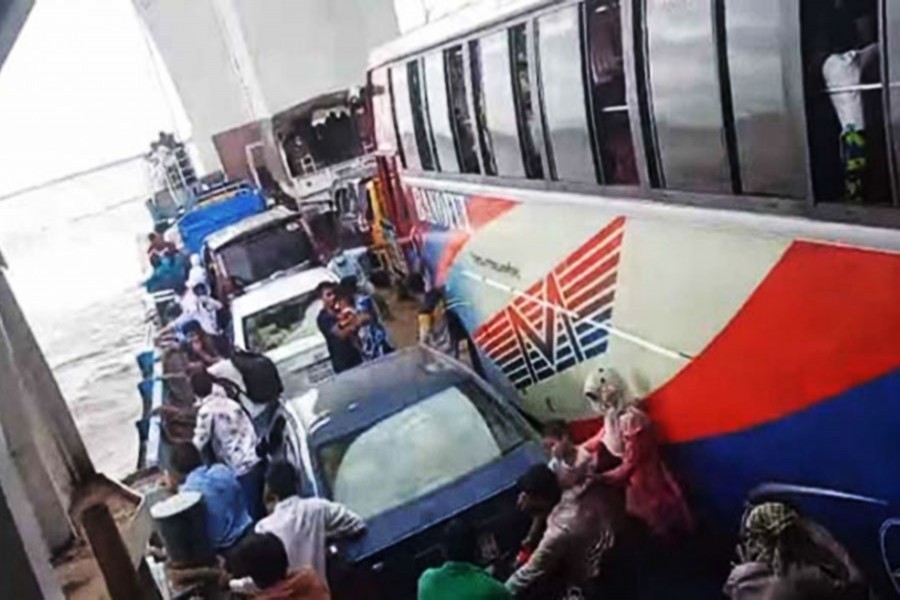
Published :
Updated :

The four-member probe committee formed following the collision of a ferry with a pillar of the Padma Bridge has recommended among others the shifting of ferry terminals from their present locations. It suggests shifting of the terminal either from Madaripur's Banglabazar to Majhikandi or from Munshijang's Shimulia to old Mawa from where the terminal was removed on account of river erosion. However, such a relocation of terminal/s cannot happen overnight. In the meantime, recommendation for crossing the bridge point between the 4th and 12 pillars should be implemented immediately. This is because current has lower velocity within the above range. In fact, during the monsoon, speed of water flow is several times higher than in other times. Usually, masters and helmsmen are cautious about the channel's speediest expanse and try to avoid that part in preference for stream flow of lower speed. The ferry Shahjalal in question preferred the space between pillar 16 and 17 and rammed into the latter when the helmsman lost control due to the strong force of current. No wonder, both have been suspended.
Fortunately, a massive tragedy was avoided by the grace of the providence. But the impact of the ferry-bridge-pillar collision was so heavy that the ferry was badly damaged at the hull developing holes. Had the holes been on the water mark, there would have been loss of hundreds of lives since the ferry at the time was carrying 500-600 passengers and 33 vehicles on board. The question that comes to mind next is, if the collision has had an impact on the pillar of the bridge costing Tk 300-billion. Initial inspection suggests no damage but the issue is under investigation. With a weight of 1,284 tonnes, the ferry hit the pillar but each pillar can withstand the brunt of a ship weighing 4,000 tonnes. So, it seems, there is nothing to be worried about the pillar or the bridge.
However, this collision follows another such accident within only three days. The earlier collision also left the other ferry damaged. Clearly, as long as the high current of the monsoon continues, ferry crossing on the route will remain perilous. Apart from using the low-current river expanse, there is a need for grounding the old and dilapidated ferries, the engines of which are weak to deal with strong current. In the lean season the Padma loses both depth and current. The recommendation of the Bangladesh Inland Water Transport Corporation's committee for shifting at least one terminal on either of the ends can be implemented without delay. In this case, the terminal used earlier with better infrastructure requiring less refurbishing should be given the preference.
The fact is that ferries might be used, although on a small scale, even after the commissioning of the Padma Bridge. Precaution should be taken for avoidance of the channel by heavy vessels at the bridge point. It is a dream bridge that is only a year away from becoming fully operational. This longest and most expensive bridge must be protected from harm's way. It is going not only to connect the south and south-western parts of the country with the capital but also raise substantially the country's gross domestic product (GDP).


 For all latest news, follow The Financial Express Google News channel.
For all latest news, follow The Financial Express Google News channel.